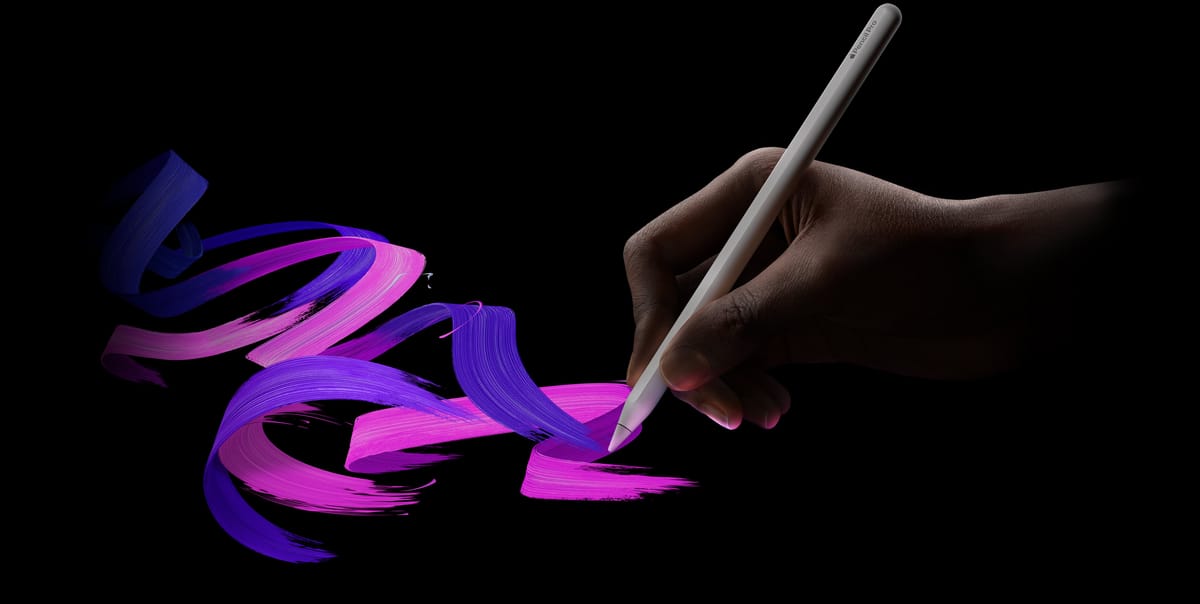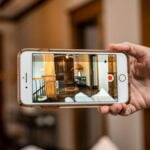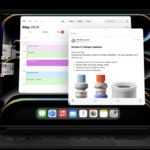The new Apple Pencil Pro would be a perfect accessory for the Apple Vision Pro.
In addition to the new iPad Pro and iPad Air models, Apple today announced the $130 Apple Pencil Pro for use with them.
In addition to the pressure sensing and double-tap sensing of the existing second-generation Apple Pencil, the new Pro model has a gyroscope, a compression sensor, and haptic feedback. While Apple didn’t say anything about it being compatible with any devices other than the new iPads it just announced, these features would make it an ideal controller for the Apple Vision Pro.
It makes a lot of sense with Apple Pencil Pro
Vision Pro and visionOS are designed around the combination of precise controller-free eye and hand tracking, fused for a “look and pinch” input system that sometimes feels almost like telekinesis. When announcing the headphones, Apple boasted that “they are so precise that they completely free your hands from the need for clunky hardware controllers.”

Statements like these make it clear that Apple won’t be releasing a halved gamepad, the dominant form of input for every other major AR/VR platform, anytime soon. However, the lack of tactility of visionOS’s default input paradigm severely limits its usefulness for the creative and professional use cases that the iPad Pro is marketed for and Sony hopes to address with its upcoming standalone headphones.
Given that Apple is already focusing heavily on the enterprise with the Vision Pro, a prudent strategy given the price of the headset, will it be content to give up the segment of the market that requires a precision input device?
Apple Pencil Pro support in visionOS could be Apple’s strategy to make the platform suitable for precision creativity in both 2D and 3D. In theory, Apple could let you turn any desktop into a huge drawing or design surface or turn the space around it into a spatial canvas for 3D modeling, animation, painting, and more.
It could work on a technical level
Vision Pro is already capable of tracking objects and skeletal hands, albeit with a low refresh rate. Tracking a bright white object of known dimensions that the user is holding in their already tracked hand doesn’t seem too complicated. Especially since this object has a gyroscope on board, its orientation is known. And if, like almost all other consumer electronics, this gyroscope is in an IMU (inertial measurement unit) that also contains an accelerometer, the tracking quality could be almost as good as that of a dedicated VR controller.
For 3D creativity, the pressure sensor and double-tap sensors would essentially give Apple and its developers a trigger and a button to work with. Double-tap to open a context menu, for example, or tap to draw or sculpt in 3D space. Meanwhile, haptic feedback would make this feel great instead of lifeless.
For 2D surfaces like your desktop, fusing pressure sensor input with pen tracking and LiDAR mesh could allow Apple to calibrate virtual content so that it appears locked precisely to the height and orientation of the desktop. The largest iPad Pro gives you a 13-inch drawing surface, but the Vision Pro could one day give you an unlimited canvas for creativity.
But is it happening?
In March, Keynote USA cited “a source familiar with the matter” as saying that Apple had internally tested a future Apple Pencil with Vision Pro, although the outlet did not go into further detail.
Just because Apple didn’t tease this today doesn’t mean it won’t happen. Today’s event focused on iPads, and adding Pencil Pro support to Vision Pro would require significant vision changes. If this happens, Apple will likely announce or tease it at WWDC, its annual event where it shows off upcoming improvements to its operating systems.
Apple previously confirmed that WWDC24 will take place on June 10 and will include “visionOS previews.” We will be attentive to any mention or preview of the Apple Pencil Pro.
Keynote USA News
For Latest Apple News. Follow @Keynote USA News on Twitter Or Google News.




